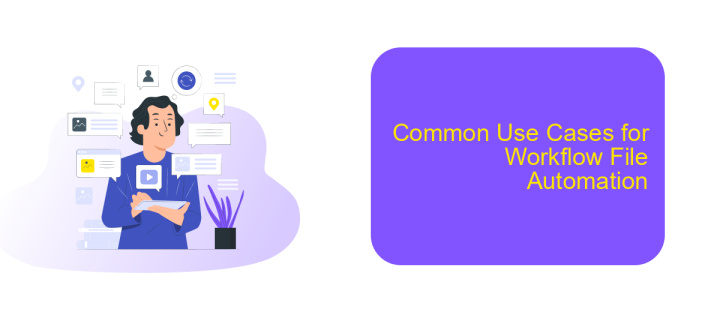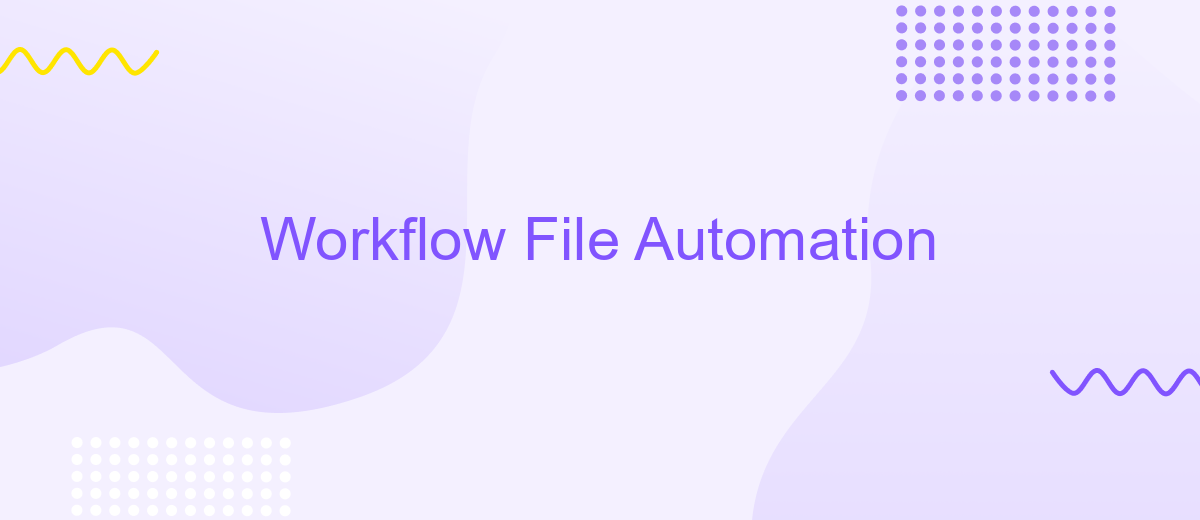Workflow File Automation
In today's fast-paced business environment, workflow file automation has become essential for enhancing productivity and efficiency. By automating repetitive tasks and streamlining document management, organizations can significantly reduce errors and save valuable time. This article explores the key benefits and practical applications of workflow file automation, demonstrating how it can transform traditional business processes and drive operational excellence.
Introduction to Workflow File Automation
Workflow File Automation is a transformative approach to managing and streamlining repetitive tasks within an organization. By automating the flow of files and data, businesses can significantly reduce manual effort, minimize errors, and improve overall efficiency. This technology enables seamless coordination between different systems and departments, ensuring that the right information reaches the right place at the right time.
- Automated file transfers between systems
- Real-time data synchronization
- Reduction in manual data entry
- Enhanced accuracy and consistency
- Scalability for growing business needs
Services like ApiX-Drive offer powerful tools for setting up and managing integrations between various applications. With its user-friendly interface and robust features, ApiX-Drive allows businesses to automate workflows without requiring extensive technical expertise. This not only saves time but also ensures that data is consistently and accurately processed across different platforms.
Benefits of Workflow File Automation

Workflow File Automation offers a multitude of benefits that streamline business processes and enhance productivity. By automating repetitive tasks, organizations can significantly reduce manual errors and save valuable time. This automation allows employees to focus on more strategic activities, fostering innovation and improving overall efficiency. Additionally, automated workflows ensure consistency and compliance, as predefined rules and standards are followed meticulously, minimizing the risk of deviations.
Another key advantage is the seamless integration between various applications and systems. Tools like ApiX-Drive facilitate the easy setup of integrations, allowing data to flow effortlessly between different platforms. This interconnectedness not only enhances data accuracy but also provides real-time insights, enabling better decision-making. Furthermore, workflow automation can lead to cost savings by reducing the need for extensive manual labor and decreasing operational costs. Overall, the adoption of workflow file automation is a strategic move that can drive significant improvements in business performance.
How to Implement Workflow File Automation

Implementing workflow file automation can significantly streamline your business processes, reduce manual errors, and save valuable time. To get started, you need to follow a few essential steps.
- Identify repetitive tasks: Determine which tasks in your workflow are repetitive and can be automated. This will help you understand where automation can be most beneficial.
- Select the right tools: Choose automation tools that fit your needs. ApiX-Drive is an excellent service that allows you to integrate various applications and automate data transfers between them seamlessly.
- Set up integrations: Configure the integrations between your chosen applications. With ApiX-Drive, you can easily connect different services without any coding knowledge, making the setup process straightforward.
- Test and monitor: After setting up the automation, test it thoroughly to ensure it works as expected. Monitor the automated workflows regularly to identify and resolve any issues promptly.
- Optimize and scale: Continuously optimize your automated workflows for better performance and scalability. As your business grows, you can expand the automation to include more tasks and processes.
By following these steps, you can effectively implement workflow file automation and enhance your business efficiency. Utilizing services like ApiX-Drive can simplify the process, allowing you to focus on more strategic tasks.
Common Use Cases for Workflow File Automation

Workflow file automation has become an essential tool for many businesses, streamlining processes and increasing efficiency. By automating routine tasks, companies can save time and reduce human error, leading to more consistent and reliable outcomes.
One common use case is in document management, where automation can handle tasks like file organization, renaming, and storage. Another popular application is in data processing, where workflows can be set up to automatically gather, analyze, and report data.
- Automated file backups and recovery
- Streamlined approval processes for documents
- Integration of various business tools and platforms
- Automated notifications and updates
Services like ApiX-Drive can facilitate these integrations, allowing businesses to connect different applications seamlessly. By leveraging such tools, companies can create more cohesive and efficient workflows, ultimately driving productivity and growth.
Best Practices for Workflow File Automation
When automating workflow files, it is essential to start with a clear understanding of your processes. Document each step meticulously and identify repetitive tasks that can benefit from automation. This initial mapping will serve as a blueprint for your automation efforts, ensuring that you address the right areas and avoid unnecessary complications. Additionally, maintain a centralized repository for all workflow files to streamline access and version control. This practice minimizes errors and enhances collaboration among team members.
Integrating various tools and services is crucial for seamless workflow automation. Utilize platforms like ApiX-Drive to connect different applications without the need for complex coding. ApiX-Drive enables you to automate data transfer between systems, reducing manual efforts and increasing efficiency. Regularly review and update your integrations to adapt to new requirements and technologies. Lastly, monitor the performance of your automated workflows and be prepared to make adjustments as needed to optimize efficiency and effectiveness continuously.
- Automate the work of an online store or landing
- Empower through integration
- Don't spend money on programmers and integrators
- Save time by automating routine tasks
FAQ
What is workflow file automation?
How can I benefit from workflow file automation?
What types of tasks can be automated with workflow file automation?
How do I get started with workflow file automation?
What tools are available for implementing workflow file automation?
Routine tasks take a lot of time from employees? Do they burn out, do not have enough working day for the main duties and important things? Do you understand that the only way out of this situation in modern realities is automation? Try Apix-Drive for free and make sure that the online connector in 5 minutes of setting up integration will remove a significant part of the routine from your life and free up time for you and your employees.


